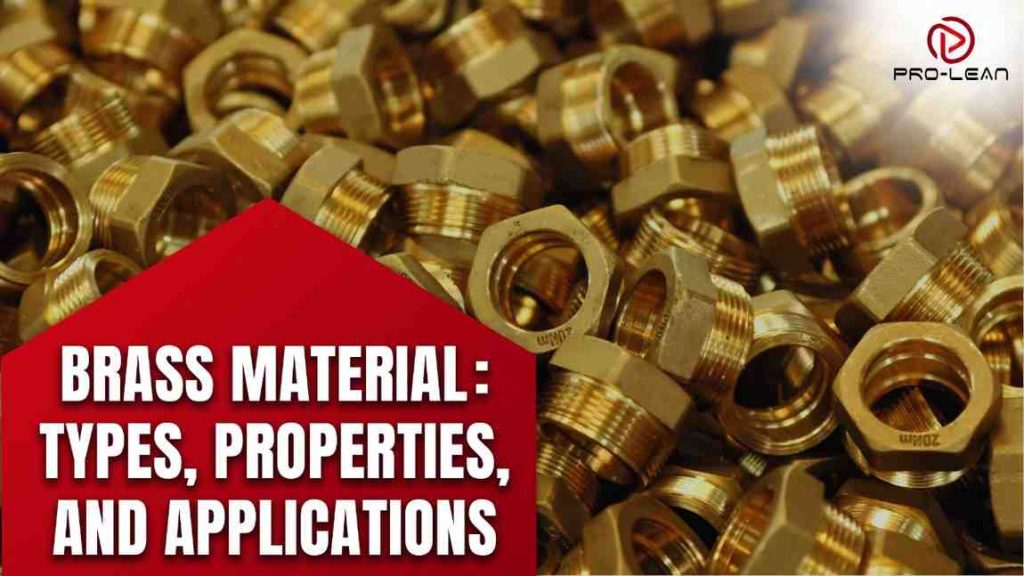
Brass Material Properties and Applications
Are you trying to determine which type of brass suits your engineering needs? Or evaluating whether your alloy selection balances strength and finish effectively?
Brass is a useful mixture of metals, mainly copper and zinc. It is essential for many industries because it is easy to shape, does not rust easily, and feels good. You can find it in strong parts for delicate musical instruments and ships.
How much do we use it? Worldwide, the brass business was around $ 40 billion last year! By changing the amount of copper and zinc, we can make brass perfect for different jobs, allowing things like water pipes to work better and be more reliable.
Trying to find out what kind of brass you are building? Or if the brass you picked is strong enough and looks the way you want? Knowing the differences between the main types of brass—alpha, beta, and alpha-beta—is key when making things carefully.
This guide will help you understand this type, their suitability, and where they are used. You will also see how ProleanTech’s careful machining helps make significant brass parts for what you need.
Let’s get right into the article to know everything in detail:
What is Brass Metal Made of?
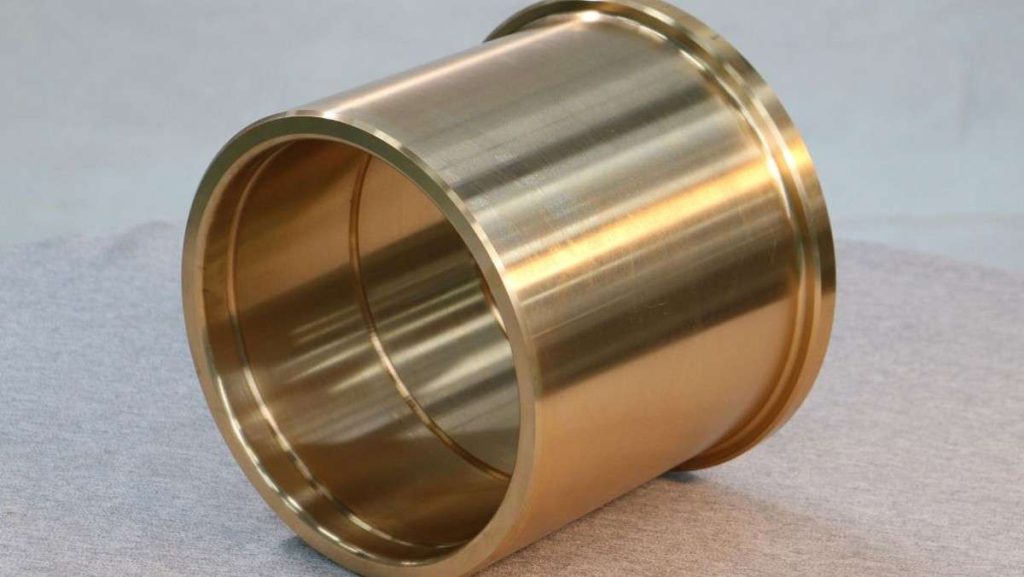
Brass Cylindrical Bushing
Brass is a metal alloy that is mainly made of copper and zinc. The ratio of copper and zinc may vary to achieve different properties and colors. Typically, brass has more copper than zinc.
For example, a common type of brass, often called yellow brass, contains about 67% copper and 33% zinc. Red brass, in another variety, has a high copper content, usually about 85% copper and 15% zinc, giving it a red color.
Technically, the density of brass ranges from 8.4 to 8.73 g/cm. Depending on the specific composition, its melting point is between 900 to 940 ° C. Other elements such as lead, tin, aluminum, manganese, and silicone can be added in small amounts to increase mechanization, corrosion resistance, or power.
ProleanTech works with various brass compositions to produce custom-engineered components tailored to diverse manufacturing needs.
Our team evaluates each project’s requirements to determine the most suitable brass type, ensuring optimal performance at competitive costs. Learn how CNC Precision Machining Delivers Accuracy for your brass components.
What is the Density of Brass Metal?
The brass metal density typically ranges from 8.4 to 8.73 g/cm³. This range varies depending on the specific structure of the alloy of brass, especially the ratio of zinc, copper, and the presence of other elements. For example, red brass (high copper material) has a higher density within this range than yellow brass (high zinc material).
What Are the Main Types of Brass Material?
Brass alloys are categorized based on their microstructure and zinc content. Each classification provides distinct mechanical and physical properties suited for different applications.
1. Alpha Brass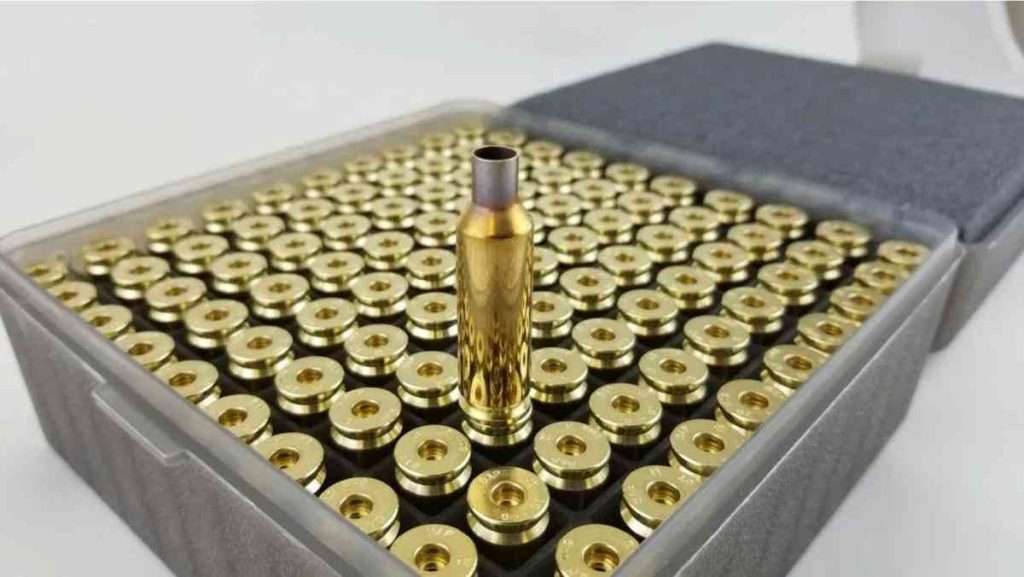
Box of Alpha Brass Cartridge Cases
Alpha brass contains up to 37% zinc and a single-phase crystalline structure. This composition allows for excellent cold working capabilities and high ductility. It is commonly used in decorative applications and for producing complex-shaped components requiring deep drawing or stamping operations.
2. Beta Brass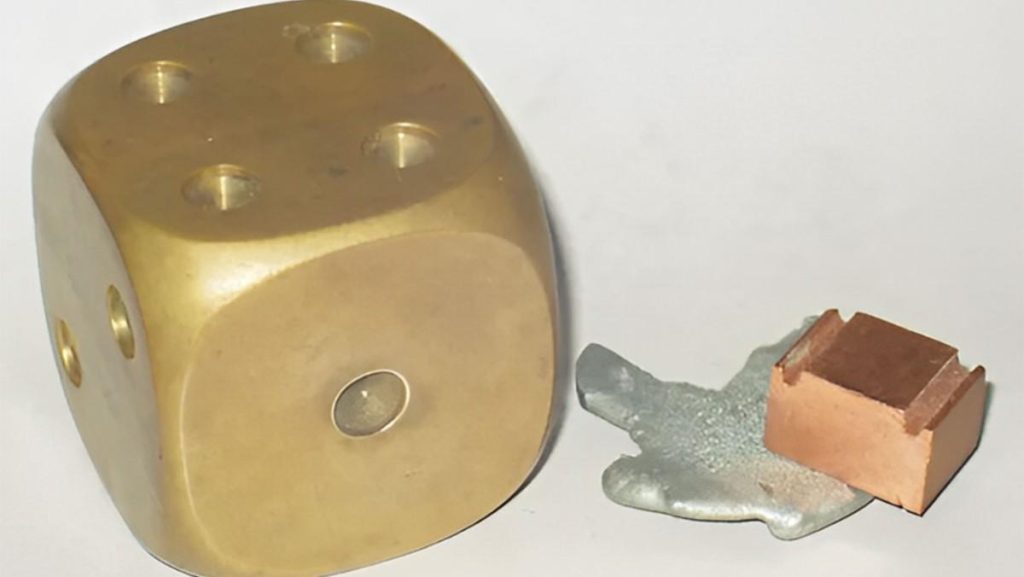
Beta Brass Die with Metal Samples
Beta brass contains 45–50% zinc and exhibits a different crystal arrangement. Compared to alpha brass, beta brass offers higher strength but reduced ductility. This makes it more suitable for high-temperature applications with critical structural integrity under heat.
3. Alpha-Beta Brass

Assorted Alpha-Beta Brass Fittings
Alpha-beta brass contains 37–45% zinc and features a dual-phase microstructure combining properties of both alpha and beta brass types. This category balances workability and mechanical strength, making it ideal for extrusions, hot forging, and architectural components requiring moderate strength and formability.
Understanding these classifications helps manufacturers select the appropriate brass type based on the required mechanical properties, environmental exposure, and fabrication methods.
Additionally, brass can be classified by specific additions to increase certain properties, eg:
- Leaded Brass: The lead is added to improve machinability.
- Naval Brass: About 1% tin for better corrosion resistance, especially in seawater.
- Aluminum Brass: Contains aluminum to increase rust resistance.
These categories help to select brass alloys suitable for various applications based on desired mechanical and chemical properties.
What Are the Primary Uses for Brass?
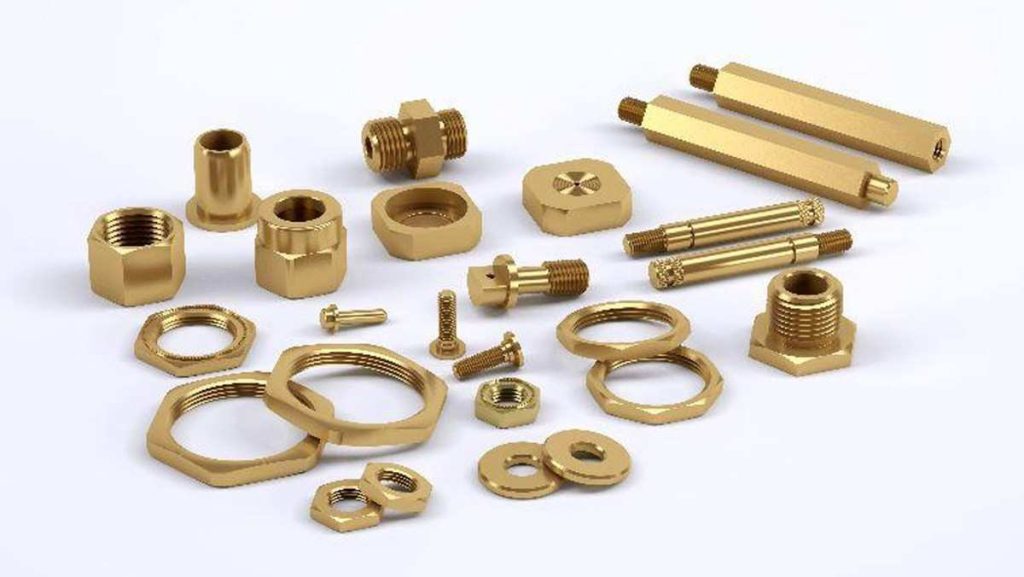
Various Brass Components
Brass finds various applications in various industries, with its attractive golden appearance, good work capacity, and corrosion resistance. Its versatility stems from the ability to tailor its properties by separating the zinc ratio from copper and adding other elements.
Here are some primary uses for brass:
- Plumbing and piping fittings are due to their corrosion resistance and mechanization.
- Music instruments such as trumpets, trombones, and saxophones are due to their acoustic properties and beauty appeal.
- Decorative hardware such as doorknobs, hinges, and furniture trim. Electrical components and terminals are due to their good electrical conductivity.
- Ammunition casings.
- Fasteners such as screws and bolts.
- Heat exchangers.
- Gear and bearings in some machinery.
Try Prolean Now!
What Are the Common Grades of Brass?
The concept of “normal grade of brass” is essential because specific composition determines the material’s properties and, as a result, its appropriate applications. Various grades offer various strength levels, flexibility, corrosion resistance, and machine power.
Understanding these grades allows engineers and manufacturers to select optimal brass alloys for their specific needs, ensure display and longevity.
Here’s a comparison table highlighting key properties of these brass alloys. Please note that these values are typical and can vary slightly based on the manufacturing process.
| Property | Alloy 260 (Cartridge Brass) | Alloy 280 (Muntz Metal) | Alloy 360 (Free Machining Brass) | Alloy 385 (Architectural Bronze) | Alloy 464 (Naval Brass) |
| Composition (approx.) | 70% Cu, 30% Zn | 60% Cu, 40% Zn | 61.5% Cu, 35.5% Zn, 3% Pb | Cu, Zn, small Pb, Sn | Cu, Zn, Sn |
| Density (g/cm³) | 8.53 | 8.39 | 8.49 | 8.47 | 8.41 |
| Cold Working | Excellent | Fair | Poor | Poor | Fair |
| Hot Working | Good | Good | Fair | Good | Good |
| Machinability (%) | 30 | 40 | 100 | 90 | 30 |
| Corrosion Resistance | Good | Moderate | Good | Superior | Excellent |
| Strength | Moderate | Enhanced | Moderate | Moderate to High | Moderate to High |
| Ductility | High | Moderate | Low to Moderate | Moderate | Moderate |
| Lead Content | Low | Very Low | High | Low to Moderate | Very Low |
| Tin Content | None | None | None | Small Amount | Present |
| Typical Uses | Ammunition, Connectors | Architectural, Marine | High-volume CNC machining | Architectural hardware, Decorative | Shipbuilding, Marine |
1. Alloy 260 (Cartridge Brass)
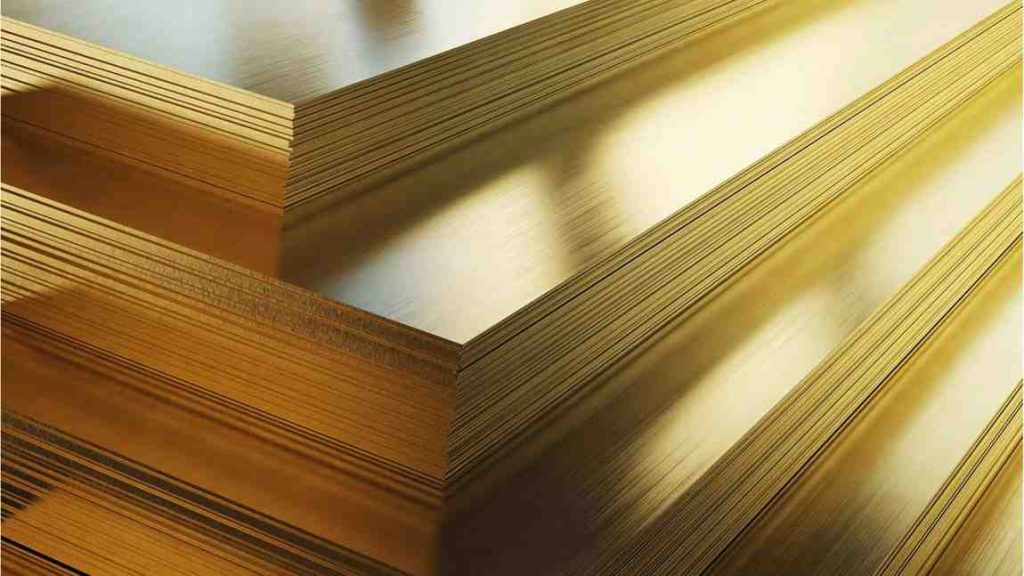
Alloy 260 – Stack of Cartridge Brass
Alloy 260, commonly known as cartridge brass, comprises about 70% copper and 30% zinc. This specific ratio provides a remarkable combination of high flexibility and excellent cold working properties.
It can be easily formed, drawn, and shaped without fracturing, making it ideal for deep drawing and spinning processes. While its strength is moderate, its construction is extraordinary.
Corrosion resistance of alloy 260 is also quite good, making it a reliable material for various applications. Due to its better cold-working capabilities, alloy 260 is used extensively to manufacture ammunition, which requires significant deformation.
Its good electrical conductivity and formalities also make it suitable for electric connectors. Additionally, it finds applications in various hardware components where complex figures are required.
2. Alloy 280 (Muntz Metal)

Alloy 280 (Muntz Metal)
Alloy 280, or Muntz Metal, comprises about 60% copper and 40% zinc. The cartridge results from the strength and low cost of an increase in high zinc material than brass. However, this increase in zinc also reduces its cold working abilities.
Muntz metal is usually done with practical warm work. Its corrosion resistance is moderate, making it suitable for a low-demand environment. Increased strength and low cost of muntz metal make it a constant option for architectural applications, such as panels and trims.
It is also used in marine fasteners and other components exposed to moderate environmental stress, where high pharma is not a primary requirement at room temperature.
3. Alloy 360 (Free Machining Brass)
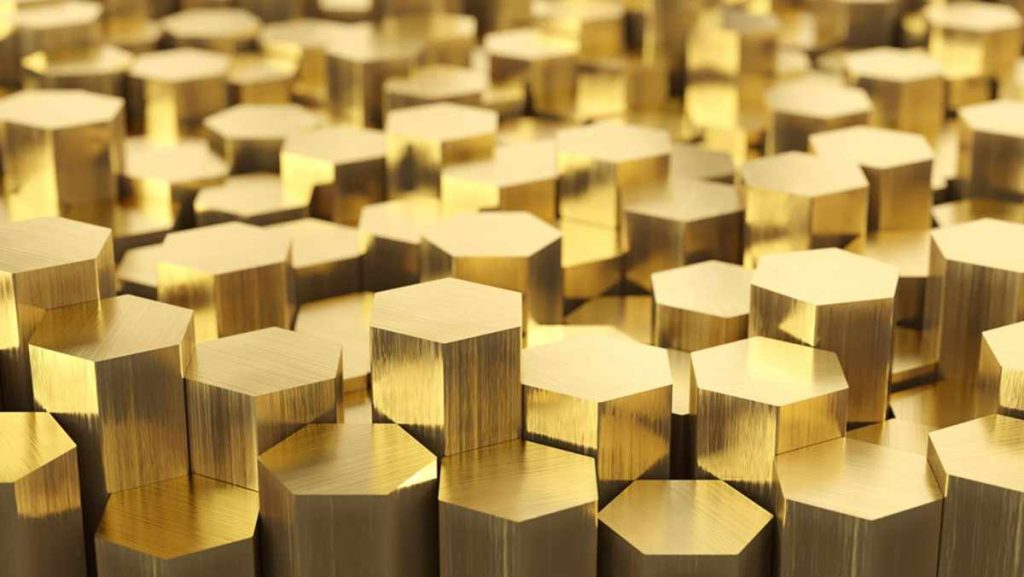
Alloy 360 (Free machining brass)
Alloy 360, known as Free Machining Brass, has an approximate composition of 61.5% copper, 35.5% zinc, and a crucial addition of about 3% lead. The inclusion of lead in its composition improves its mechanization.
Lead acts as a lubricant and chip breaker during the operation, making the production rate rapid and less equipment. While its strength and flexibility are moderate, its excellent mechanization is its defined characteristic.
Alloy 360 is the go-to grade for high-volume production of accurate components using CNC machining. It is used widely for the manufacture of screw, bolt, gear, fitting and various other complex parts where efficient and precise machining is necessary.
4. Alloy 385 (Architectural Bronze)
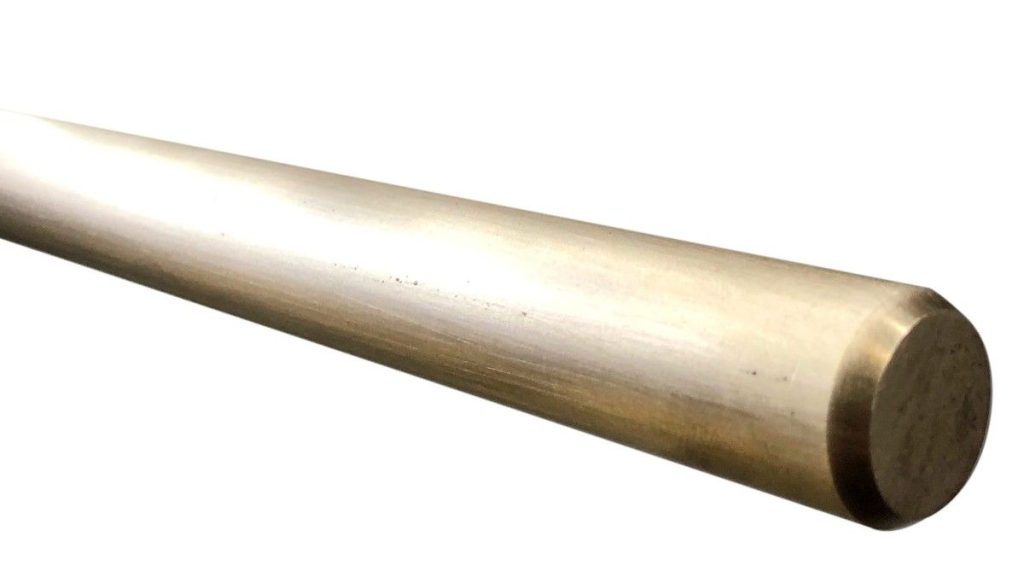
Alloy 385 (Architectural Bronze)
Despite being called “architectural bronze”, the alloy 385 is a brass alloy, usually with small additions of copper, zinc, lead, and tin.
This composition provides better corrosion resistance than some other brass and allows it to develop an attractive patina over time, which is highly desirable in architectural applications. Its strength and working ability are good, which are suitable for shaping and installation.
Alloy 385 is a popular choice for architectural hardware, including door and window frames, railings, and decorative fixtures. The combination of corrosion resistance and the development of an aesthetically pleasing patina makes it ideal for exposed applications where appearance and longevity are essential.
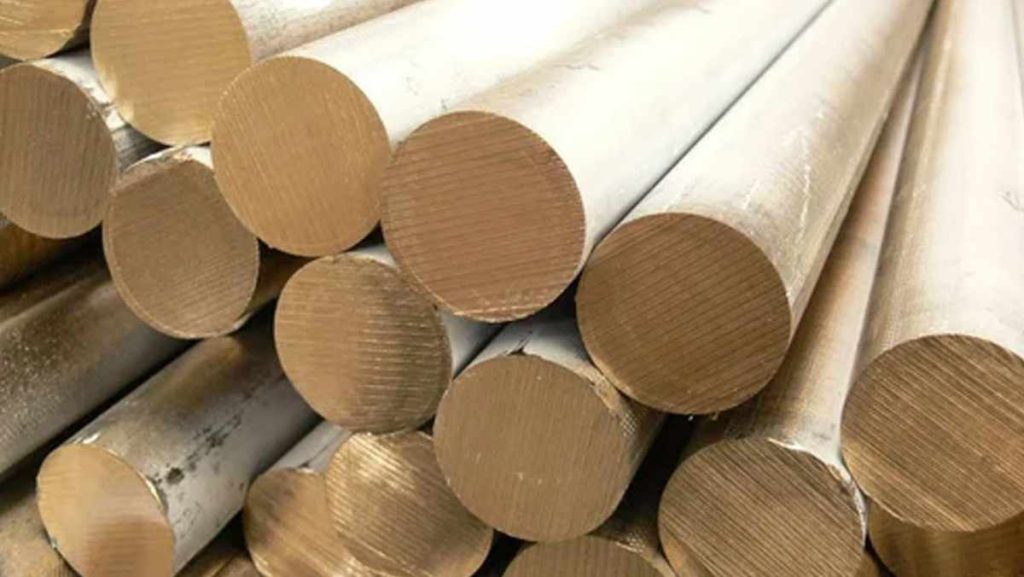
Alloy 464 (Naval Brass)
Alloy 464, or Naval Brass, comprises copper, zinc, and approximately 1% tin. In addition to tin, it enhances its corrosion resistance, especially in the marine environment.
It also provides good strength and moderate flexibility. This makes it a reliable material for applications where exposure to salt water or other corrosive conditions is a concern.
Due to its excellent resistance to saltwater rust, Naval brass is used in large -scale ship -making and producing offshore equipment.
General applications include marine fasteners, propeller shafts, valve stems, and other components that must withstand harsh marine conditions.
Each of these grades serves a distinct purpose, and selecting the correct one depends on factors such as mechanical load, environmental exposure, and desired surface finish.
Physical Properties of Brass
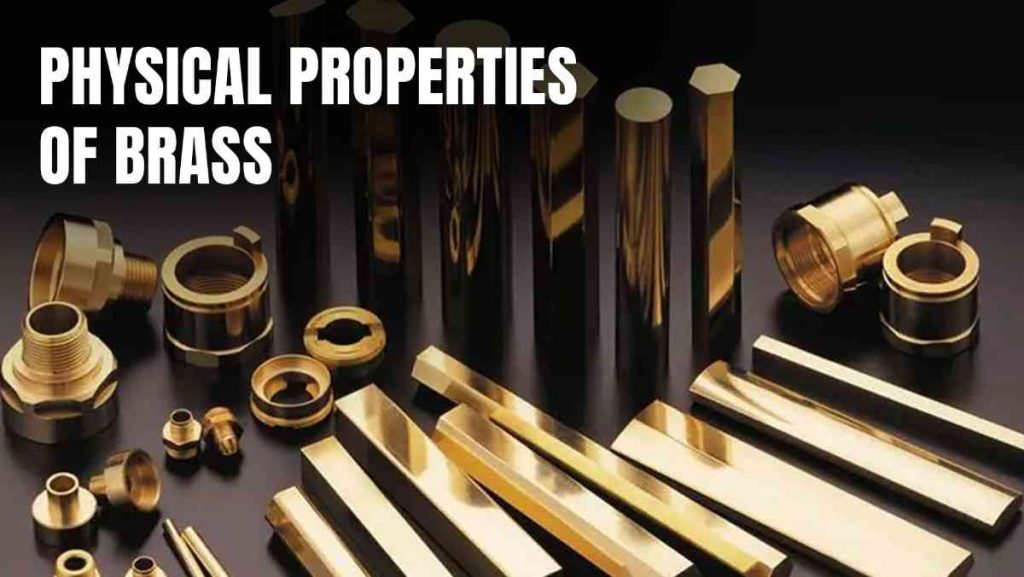
Physical Properties of Brass
The physical characteristics of brass differ from one alloy to the other, but it still possesses the basic features that make it the key alloy for several industries.
1. Brass Metal Density
The density of brass metal ranges from about 8.4 to 8.73 g/cm3. This places brass between aluminum and steel in terms of weight, offering a favourable balance between mass and structural performance. High zinc content usually indicates slightly lower density.
2. Thermal Conductivity
Brass exhibits excellent thermal conductivity, ranging from 109 to 125 W/(m·K). This makes it suitable for heat exchangers, radiators, and components requiring efficient heat dissipation.
3. Electrical Conductivity
While not as conductive as pure copper, brass still offers moderate electrical conductivity, typically around 15–45% of copper’s value. Therefore, brass is worth considering in the applications of terminals, connectors, and switchgear, where machining activity and corrosion resistance must be considered.
Because of these properties, brass finds use in applications demanding thermal management, moderate electrical conduction, and mechanical strength.
Try Prolean Now!
Mechanical Properties of Brass
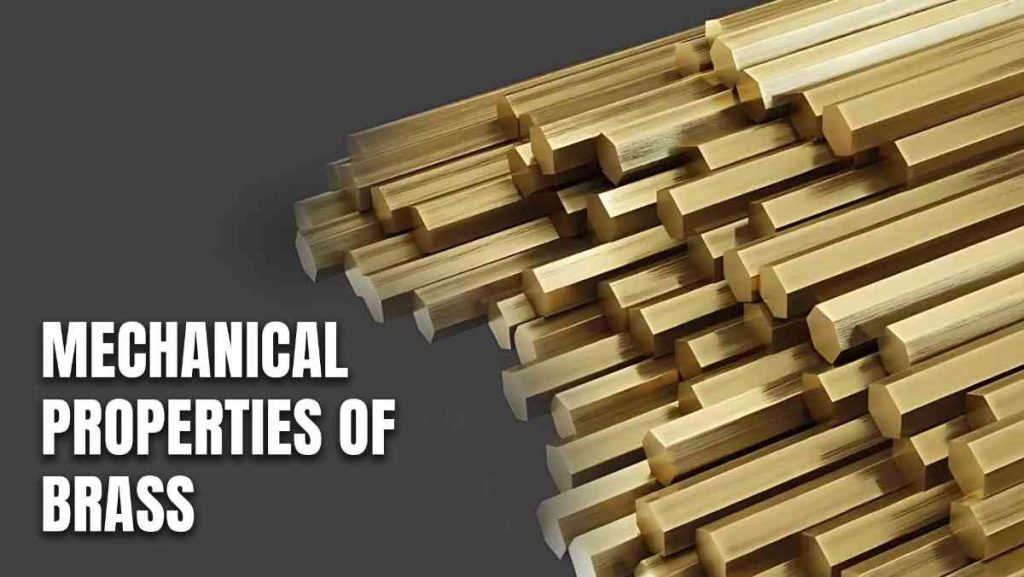
Mechanical Properties of Brass
The mechanical properties of brass cover the material’s behavior under load-deformation actions, which include tensile strength, yield strength, hardness, and elongation.
1. Tensile and Yield Strength
Brass typically displays tensile strength between 250-550 MPa and the power of yield from 70–450 MPa. These values depend on specific alloy composition and processing method.
2. Hardness and Ductility
Hardness values for brass range from 40–90 HRB. The material also exhibits excellent flexibility, with an increase of 10–70%, usually at a price. This allows a broader shape through bending, stamping, and drawing processes.
3. Machinability
Most brass alloys offer better machine potentials, scoring 100% on the free-cutting grade machinability index. This enables high-speed CNC machining with minimal tool wear, reduces production costs, a nd improves the quality of the part.
ProleanTech uses these mechanical properties to create complex brass components efficiently while maintaining dimensional accuracy and surface finish. CNC Machining Cutting Speed and Feed Rate are crucial in optimizing brass machining.
How Does Brass Compare to Bronze and Copper?
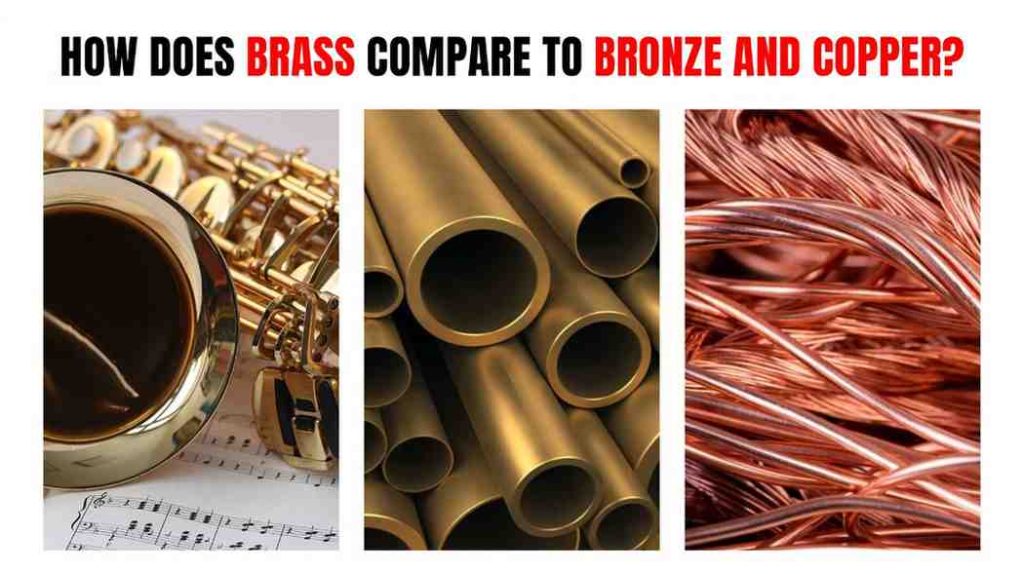
Brass vs. Bronze vs. Copper
Grasping the distinctions among copper, brass, and bronze is essential when choosing the appropriate material for a specific use.
Copper is a fundamental metal in its pure form, brass is an alloy of copper and zinc, and bronze is classically an alloy of copper and tin. Each composition conveys unique mechanical and chemical characteristics.
Mechanical Characteristics
Brass provides better machine working than bronze, but it is not more like pure as copper. Bronze usually provides increased hardness and resistance to wear, making it suitable for bearings and shrubs. On the other hand, copper possesses better electrical conductivity but low mechanical strength.
Corrosion Resistance
All three materials display different levels of rust resistance. Brass performs surprisingly in both air and freshwater environments; the bronze effectively opposes the rust of saltwater, while copper, over time, creates a protective oxide layer.
ProleanTech helps customers select the best copper alloy based on special applications, environmental factors, and performance requirements.
Uses of Brass in Manufacturing
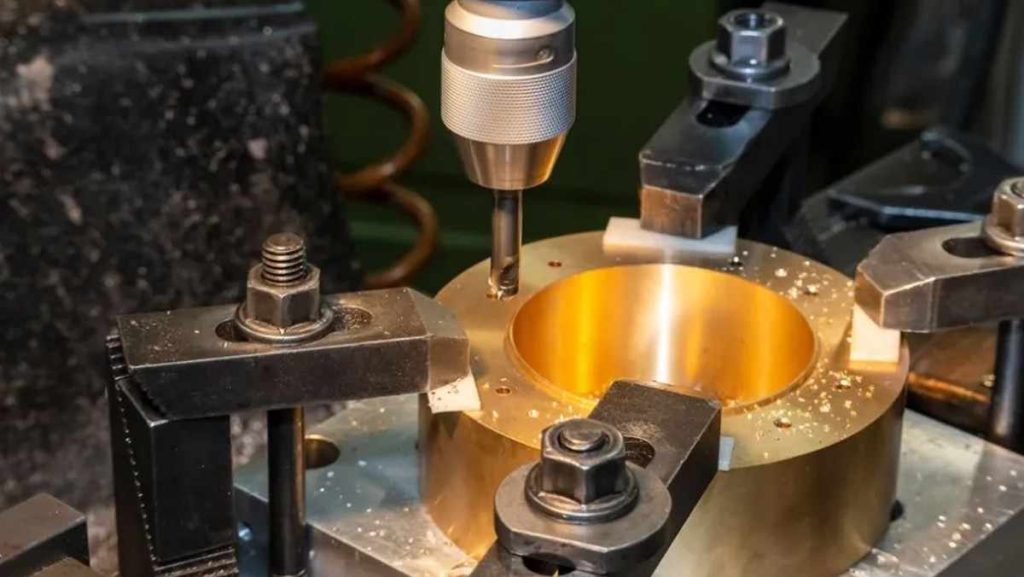
Brass Machining in Manufacturing
The adaptable nature of brass is suitable for various industrial uses. A mixture of durability, corrosion resistance, and visual attraction increases its popularity in multiple industries.
1. Plumbing and Fluid Systems
Brass is often used in plumbing fixtures, valves, and water distribution systems because its ability is due to ability to resist rust and biofouling. It maintains its structural stability in moist conditions and meets many drinking water standards.
2. Electrical Components
Brass medium conductivity makes it suitable for connectors, terminals, and switches. When combined with CNC machining, brass enables the manufacture of complex electrical parts with accurate tolerance.
For more information, explore our guide on CNC Electronics Machining: Components Produced & Benefits.
3. Musical Instruments
Brass is the traditional material for musical instruments such as trumpets, trombones, and French horns. Its density and elastic modulus influence acoustic properties, contributing to the instrument’s tonal quality.
4. Decorative Hardware
Due to its attractive golden appearance and corrosion resistance, brass is widely used in decorative hardware, fixtures, and architectural details. Many historical buildings feature brass components that have remained functional and visually appealing for decades.
5. Marine Applications
Certain brass alloys, particularly naval brass, perform exceptionally well in marine environments. They resist seawater corrosion and are commonly used in ship fittings, propellers, and navigation instruments.
Check this out: https://proleantech.com/cnc-precision-machining-parts/
Advantages of Using Brass Material
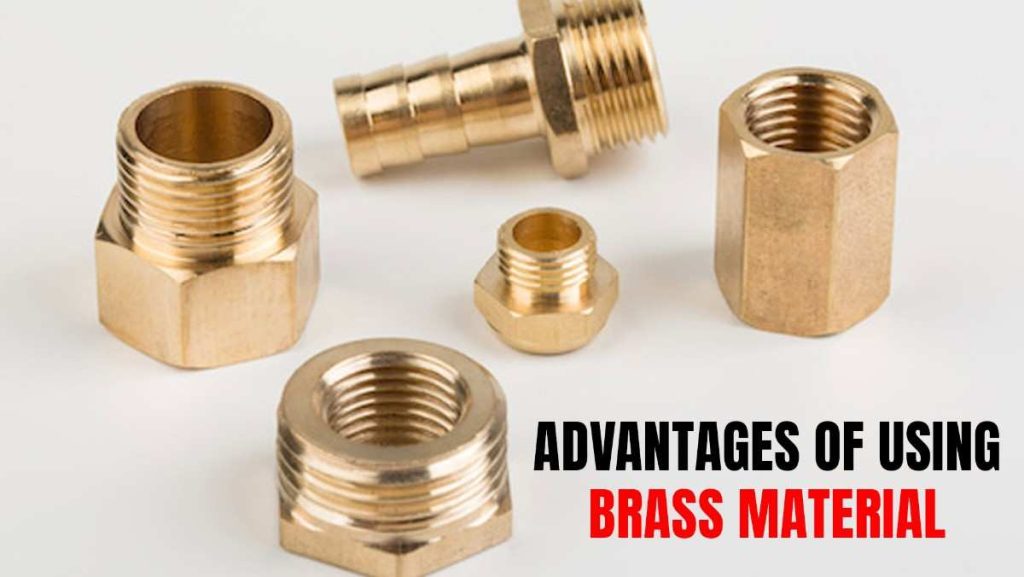
Advantages of Using Brass Material
Brass offers numerous benefits, making it a preferred material in various manufacturing scenarios.
1. Excellent Machinability
Brass is considered one of the most machinable metals, allowing for high-speed CNC machining with minor tool wear. This shortens production time and decreases total manufacturing expenses.
2. Corrosion Resistance
Brass exhibits good resistance to atmospheric exposure and freshwater environments. This extends component lifespan and minimizes maintenance requirements.
3. Aesthetic Appeal
The natural golden color of brass makes it ideal for visible components and decorative applications. It can be polished to a mirror finish or allowed to develop a natural patina.
4. Antimicrobial Properties
Brass surfaces naturally inhibit bacterial growth, making them suitable for high-touch areas such as door handles, railings, and medical equipment.
Disadvantages and Limitations of Brass
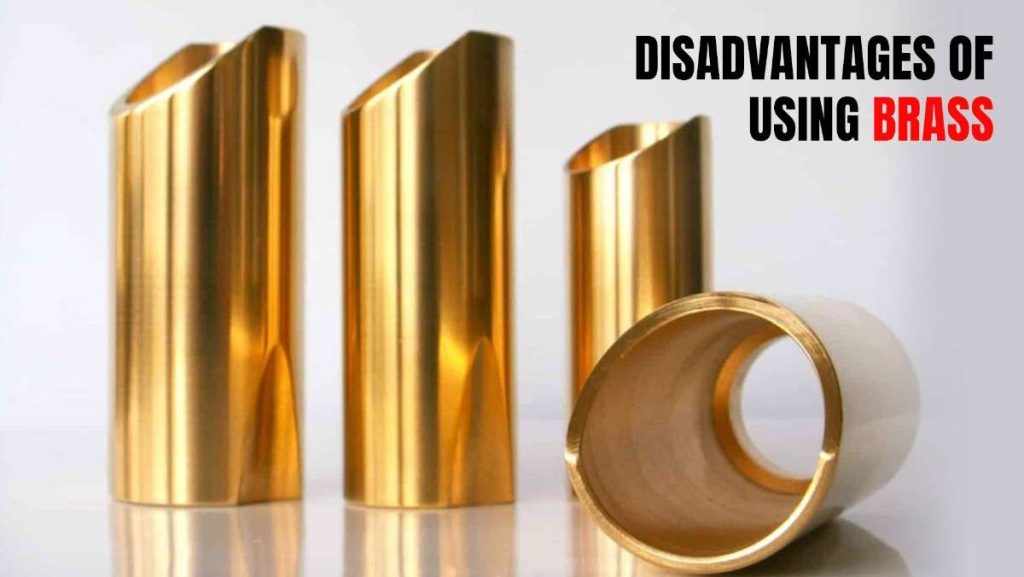
Disadvantages of Using Brass
Although brass has numerous benefits, it also presents certain drawbacks that must be acknowledged.
1. Temperature Sensitivity
Most brass alloys exhibit restricted high-temperature capabilities, with service temperatures typically not exceeding 200°C. Above this limit, mechanical properties deteriorate swiftly.
2. Dezincification Risk
Certain brass alloys are prone to dezincification, a specific corrosion process in which zinc is removed in hot, acidic conditions.
3. Cost Considerations
Brass is typically pricier than steel or aluminum because of its copper composition. Nonetheless, its superb machinability frequently compensates for this expense by minimizing production duration and tool costs.
4. Lead Content Concerns
Conventional free-machining brass includes lead, which raises health and environmental issues in specific uses. Options without lead exist, but adjustments in machining settings might be necessary.
Manufacturing Processes for Brass Components

Manufacturing Brass Components on a Swiss Lathe
Brass can be processed using several manufacturing techniques, each suited to different design complexities and production volumes.
1. CNC Machining
CNC machining is perfect for manufacturing accurate brass parts that require tight tolerances and complex designs. The remarkable machine capacity of brass enables high cutting speed, smooth surface finish and equal part quality. Dominate the Market with our superior multi-axis CNC machining power and advanced manufacturing capabilities.
2. Casting
Casting techniques such as sand casting, investment casting and die casting are suitable for parts with complex internal designs. Brass displays excellent liquidity in its melted state, ensuring an accurate copy of mold features.
3. Forging and Extrusion
Hot forging and extrusion form strong brass parts with better grain structures. These techniques are particularly successful for the large-scale production of structural components.
4. Stamping and Forming
High flexibility of brass makes it ideal for stamping, bending and deep-drawing processes. This allows for the effective construction of thin-wall or complex shape parts.
ProleanTech provides thorough manufacturing solutions for brass parts, guaranteeing excellent outcomes no matter the selected approach. Contact with our experts to discuss your specific requirements.
Learn more: https://proleantech.com/custom-motorcycle-parts-explain/
Conclusion
Today, brass is still very important because it can be easily shaped and worked with. Knowing different types of brass and what they can do helps companies take the best for their products.
ProleanTech is good at creating accurate brass parts for various industries. We use our skills to develop high-quality components that fit with your project.
For your next brass project, think about how strong it should be, how it handles heat, and it will be the environment to choose the right brass. Partnering with experts like Proleantech means you will create reliable, excellent brass parts.
Get a custom Pricing Estimate for your particular project needs. Book CNC Machining Services From China today!
FAQ’s
How Can we increase the productivity of CNC machining for Brass parts?
Use the proper tools, conditions, and equipment when machining the parts to increase productivity.
Is the CNC machining of Brass the Right Choice for my Project?
Brass has excellent mechanical properties that vary according to the content of zinc. It is also economical and easy for CNC machining. So it can fit your Project. Just let us know what component or product you are looking for. Our experienced engineers will help you. You can also check our guide about CNC copper machining, it will help you in making decision between brass and copper.
How do I pick the best brass alloy grade?
It depends on the products’ applications and the necessary mechanical and physical qualities, including hardness, strength, ductility, and conductivity. Because each type of alloy has unique properties, choosing the best grade can be challenging.
So, let our professionals decide which is best for CNC machining based on your requirements.
What are the factors needed to consider while selecting the Brass grades?
You should consider the four critical factors of corrosion resistance, strength, machinability, and appearance.
Do machined components of Brass needs Surface finishing?
Most components do not need any post-processing of coating, but hand polishing would be better for ornamental items.



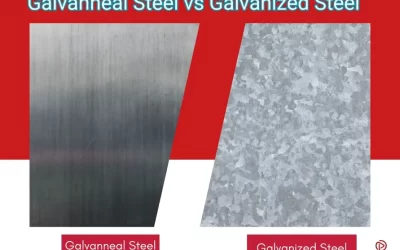
0 Comments